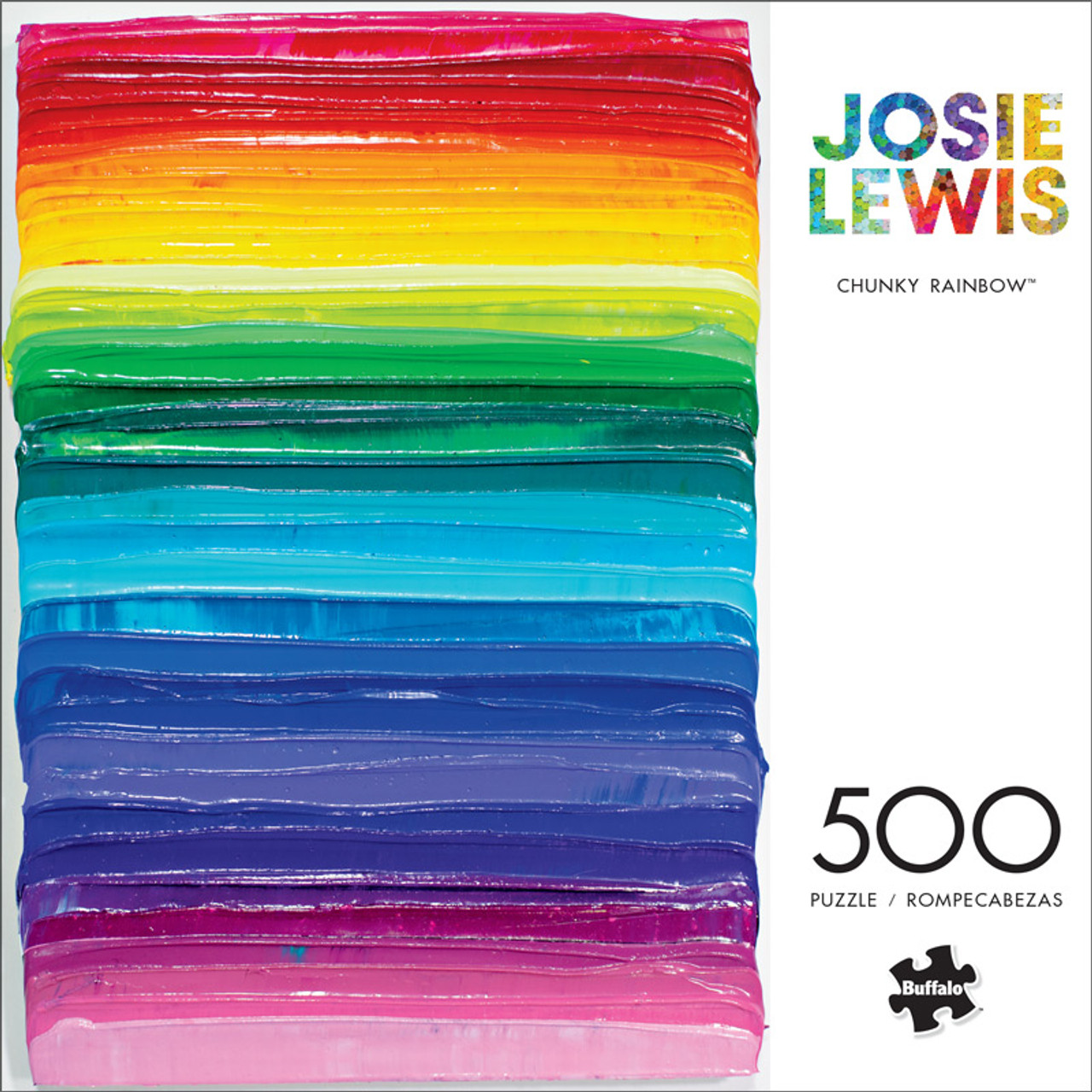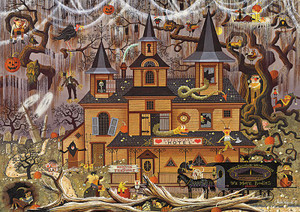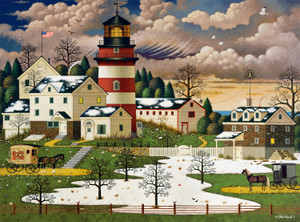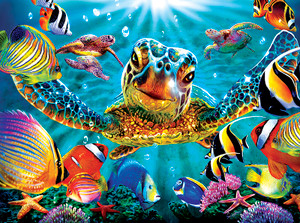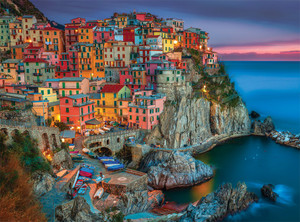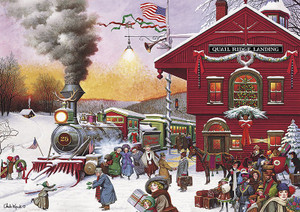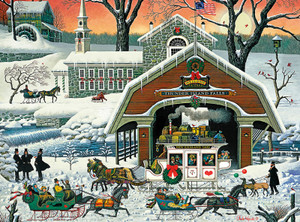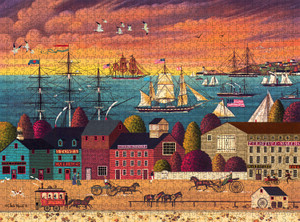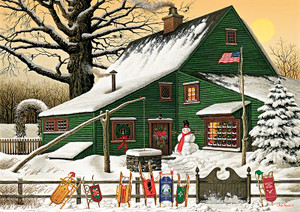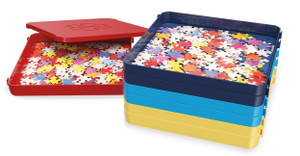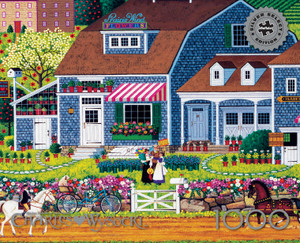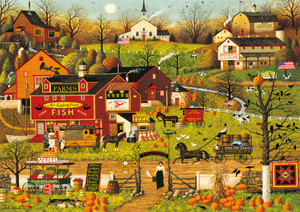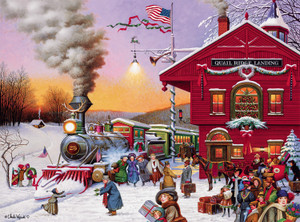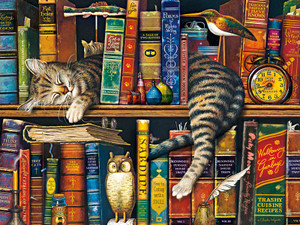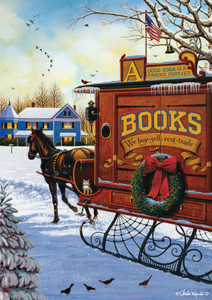Posted by Buffalo Games on Jun 28th 2022
Are Puzzles Considered Art?
There is a long-standing debate about whether jigsaw puzzles are art. Many people consider them to be so, but others maintain that artists create the picture that puzzles use, and scientists solve the puzzles. However, a strong argument could be made for both sides, so maybe jigsaw puzzles are both — scientific art, perhaps.
Let’s dive into arguments for both sides, and you can decide for yourself whether puzzles are artistic or scientific…or both.
Artists Create Puzzles, and Scientists Solve Them
One side of the debate might argue that the pictures depicted in puzzles are created by artists, and that’s the only part of puzzling that is artistic. This group has the opinion that actually solving a puzzle is a scientific process, not an artistic one.
There are some well-known advocates of scientific puzzling in this group. One of them is a Nobel Prize-winning physicist named Richard Feynman, who states that puzzle-solving is carried out with the same motivation and goals as science experiments are. Both are done to find something out and feel the thrill of discovery. Many people feel excitement and satisfaction when they finally finish a puzzle or find the piece that’s been eluding them.
Another advocate of this argument, philosopher of science Thomas Kuhn, believes that puzzle-solvers relish the challenge of solving problems in which the outcome is uncertain, much as it is with science experiments.
Puzzle Paintings and Science
Puzzle paintings are works of art that usually depict ordinary items in unusual circumstances, giving new meaning to objects that are otherwise familiar. A 17th-century artist named Diego Velázquez is often credited with creating “the ultimate puzzle painting” with his famous Las Meninas, which was completed in 1656.
The painting is not cut into shapes or disassembled and then reassembled. It’s called a puzzle painting because few pieces of art have created so many different interpretations by people and so much critical analysis. The painting is an impressive 10 ½ feet high by 9 feet wide and has life-sized figures depicted within. The puzzle part comes from its complex composition, the cast of “characters” in the painting, the roles they play, and the visual world created by the artist.
This visual world seems unusually and extremely palpable to viewers, and the puzzle painting is known for the nature of its puzzles and riddles within it. For over 360 years, however, people have been trying to figure out exactly what the artist was really depicting.
Calling the Scientists in to Solve the Puzzle Painting
The mystery of the actual subject of the painting attracted the attention of two scientists. In 2009, Yasuo Furuichi and David Stork built a virtual 3D computer model of Las Meninas. Their goal was to enable viewers to analyze the painting from any angle and determine its true meaning.
One theory surrounding the puzzle painting has to do with two faces painted on the hidden side of the canvas that could be seen from the front side. People wanted to understand the idea and significance this feature had for the artist.
One theory had been that it was the faces of the king and queen at the time, who might have been watching the artist work. Thanks to the 3D model built by the scientists, it was determined that the faces in the painting do originate from the hidden side of the painting, but that it’s not supposed to be the king and queen watching the artist.
Science and Jigsaw Puzzles
Some people think of jigsaw puzzles as being scientific in much the same way as the scenario involving Las Meninas. The pieces of a jigsaw puzzle are cut out in precise contours, requiring puzzlers to reconstruct the image. This view considers jigsaw puzzle pieces to be like the ordinary subjects in puzzle paintings that are insignificant by themselves but take on a whole new meaning when “put together” with other pieces.
Just as puzzle paintings must be solved using the scientific method, which involves hypotheses, step-by-step actions, analytics, theories, and trial and error, so too must a jigsaw puzzle.
Puzzle Paintings and Art
Scientists have not been the only ones to try to “solve” the mystery of what Las Meninas really depicts. Other artists have done so, too, including the infamous Pablo Picasso, who secluded himself for over five months trying to do a radical deconstruction of the masterpiece painting.
In trying to do so, he painted 46 different versions of Las Meninas. He never did solve the mystery, although, in his 46 renditions, he tried to “put the pieces together” in several different ways.
Puzzling as a Creative Art Form
While some people maintain that putting jigsaw puzzles together is not creating art, others challenge that it actually is. They argue that no matter what the subject matter is, when someone completes a puzzle, they complete an entirely new picture, image, or scene that did not exist when the puzzle pieces were not in place.
While science advocates point out the use of theories, trial-and-error methods, and symmetry to solve jigsaw puzzles, artists cite the fact that people look at colors, lines, patterns, and textures to solve them.
Creative processes very much involve memory retrieval, visualization, logical reasoning, and of course, imagination.
Jigsaw Puzzles: A Scientific Art
Solving jigsaw puzzles does require elements of creative art, such as achieving continuity of colors and patterns. However, the activity also requires elements of science, such as knowledge application during trials.
Every time we lift a puzzle piece to meet the edge of another, we have a “theory” that the piece should go there. We then test that theory by trying to place the piece where we believe it should go.
Regardless of whether you consider putting together jigsaw puzzles to be an art form or a type of science experiment, most people do agree that puzzles can be considered both. It makes sense that artistic processes, as well as scientific ones, are required to complete puzzles.
As for the question, “Are puzzles considered art?” that may completely depend on a person’s own definition of “art.” Is a finished jigsaw puzzle a visual creation, or is it a finished experiment? You decide.
